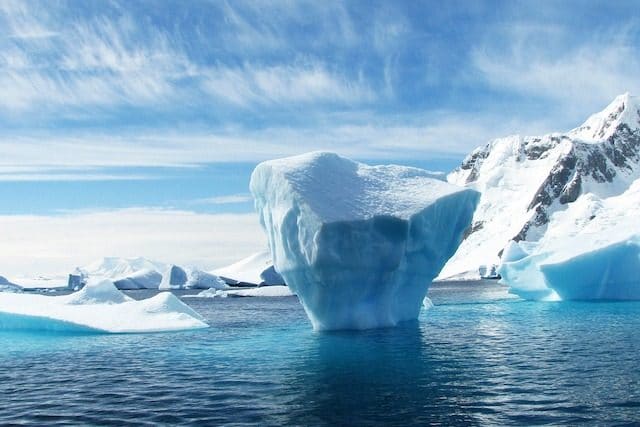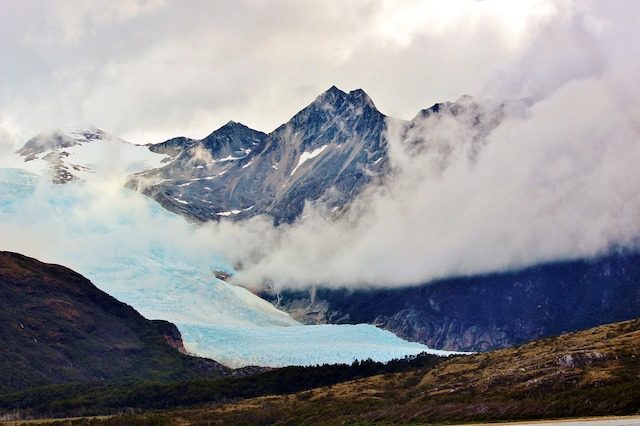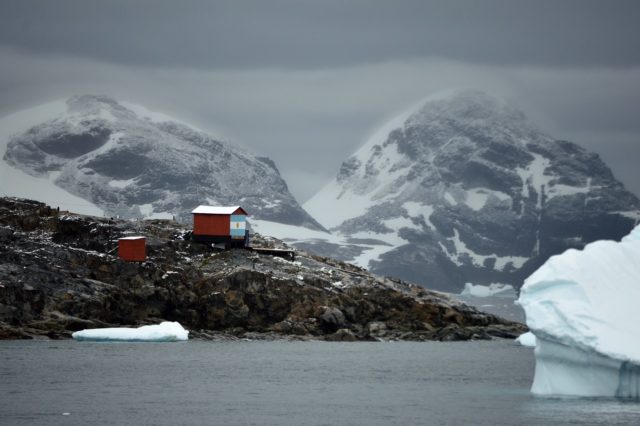In 1968, Ohio State College glaciologist John Mercer wrote a paper in regards to the risks of the Antarctic ice cap melting. He studied knowledge from glaciers and dry lakes that had proof of as soon as being submerged and concluded that there should have been a time when all that ice was liquid, about 120,000 years in the past. He then posited that this might occur once more. That the ice might soften and sea ranges might drastically rise.
The concept of holes within the ozone layer, after which international warming, after which local weather change inflicting ice caps to soften is clearly not new. It’s been round for a very long time, but it surely by no means actually picked up steam till the Nineteen Seventies. That was when satellites have been first used to measure the ice, and the loss may very well be definitively proven. Within the Nineties, the melting of the ice sheet masking Greenland dramatically elevated, doubling the speed it had been experiencing for the reason that Sixties.
By 2021 and 2022, the quantity of ice loss had escalated considerably. Each years had ice losses of above the typical of the total earlier decade. Seven of the ten most adverse mass-balance years, that’s, the years that noticed glaciers lose essentially the most ice, had taken place since 2010.
By 2023, mountain glaciers had misplaced the equal of 26 ft of water relative to 1970 ranges. Or, put one other means, it was like eradicating 94 ft from the highest of every one. So sure, ice is melting whether or not some individuals wish to acknowledge it or not. It’s taking place comparatively rapidly, and annually appears to be getting worse. What does that imply for the ice caps and, finally, for us? Let’s have a look and see what the consultants suppose.
Ice Caps, Glaciers, or Ice Sheets

The terminology can get complicated when coping with ice melts as a result of, as with many issues, the media and on a regular basis individuals will usually use phrases interchangeably. However there are variations between ice caps, ice sheets, and glaciers. When you would possibly suppose that an ice cap is essentially the most vital ice formation, the alternative is definitely true. An ice cap is a glacier that covers lower than 50,000 sq. kilometers or 20,000 sq. miles. An ice sheet could be one thing bigger than that.
When a sequence of glaciers and ice caps are linked, they’re known as ice fields. All of these items are kinds of glaciers. When the information talks about ice caps melting, they’re seemingly referring to ice sheets and even ice fields since all of them are in danger, however ice cap has turn out to be extra of a acknowledged time period.
The glaciers that exist at each the North and South Poles of the Earth are normally known as the polar ice caps. These have been, historically, everlasting glaciers. After they soften, it’s vital as a result of, for a lot of historical past, since we developed the power to watch such issues, we had not anticipated or identified this to be a factor that would occur so considerably. These are the ice caps most individuals consider after they hear about ice melting and local weather change. Solely lately have individuals began to incorporate Greenland within the equation. However these are simply a number of the glaciers that may be discovered all around the world. Nations like Chile, Pakistan, Tajikistan and lots of others even have glaciers vulnerable to melting away.
As a lot as 99% of the world’s freshwater exists in these glaciers. If the ice caps melted totally, it could alter the world as we all know it.
How Quick Are They Melting?

We all know that they’re melting, they usually’re melting sooner than we anticipated them to. However precisely what does that imply? In line with knowledge from NASA, the thickness of the Arctic Ice has decreased 40% for the reason that Sixties. Decade by decade, they’re reducing by about 9%.
These numbers sound daunting, however percentages have a means of constructing one thing appear much less spectacular than it truly is. So, let’s put this one other means. Antarctica is dropping about 150 billion tons of ice per 12 months. That’s simply melting away into the ocean. Dramatic, proper? Properly, Greenland is dropping 270 billion tons of ice per 12 months. On August 1, 2019, Greenland misplaced 12.5 billion tons of ice on simply that day.
Since 1985, Greenland has misplaced one trillion tonnes, or about 1.1 trillion tons, from glacier retreat alone. As of 2024, Greenland has been dropping 30 million tonnes per hour, 20% greater than had been beforehand thought.
A part of the issue is that the Arctic suffers from Arctic amplification, a phenomenon the place it warms about 4 instances sooner than the remainder of the world.
The web site The World Counts retains a operating tally of melted ice all the way down to the day for individuals who like real-time apocalyptic knowledge. The primary month of 2025 noticed about 77 billion tonnes of ice soften globally. Within the 12 months, you possibly can anticipate 750 billion tons to fade. That’s 24,000 tons each second, which is a quantity so baffling it’s exhausting to consider what to do with it.
So, huge quantity time. Larger than 750 billion tons, that’s. Since we began monitoring this kind of factor in 1961, all the best way as much as nearly a decade in the past in 2016, the world misplaced 9 trillion tons of ice. And we already noticed that loss in Greenland has been up greater than 20% than anticipated.
How a lot time do we now have left? Properly, spoiler, it’s not that lengthy.
How Lengthy Will They Final?

Scientists on the US heart for atmospheric analysis have put an expiration date on Arctic Ice. In line with their calculations, by the 12 months 2040, the ice will likely be gone fully. By 2100, it’s feared a 3rd of all of the glaciers on the planet, not simply the Arctic, will likely be gone.
Some predictions have all of the Arctic ice melting away within the 2030s. All it is going to take is the summers persevering with to development hotter and warmer annually as they’ve been. The 12 months 2024 was the most well liked 12 months on file, edging out 2023. Actually, 2015 to 2024 have been the 10 warmest years on file. Antarctic sea ice protection was the bottom ever in 2024, beating out 2023.
After all, there have been durations of warming all through historical past. Skeptics will usually cling to this and different causes as to why they consider there isn’t any disaster and that warming and cooling are merely a pure cycle of the earth. The issue is that this time, it’s not wholly pure, and there may be ample proof to help that. Mankind has elevated the prevalence of greenhouse gases within the environment far past what they’ve been prior to now at a sooner price.
No matter no matter causes the local weather has modified prior to now, humankind is inflicting it to occur now, and we will see the outcomes 12 months over 12 months in how climate patterns have turn out to be extra extreme and harmful because of this. Whereas animals, vegetation, and people can in all probability adapt to this over time, the comparatively speedy change continues to be inflicting a whole lot of issues.
What Occurs if They Vanish?

The obvious downside with the ice caps melting is that every one that ice turns into water. All that water has to go someplace, and meaning the ocean ranges are going to rise. One prediction from the intergovernmental panel on local weather change warns that by the 12 months 2100, we might see ocean ranges rise by 10 to as a lot as 23 inches. If the whole lot goes in Greenland, sea ranges might rise as much as 20 ft. Greenland and the Antarctic collectively might wipe out coastal cities like New York, Los Angeles, and most of Florida.
For some perspective on what meaning, one foot of ocean stage rise equals about 100 ft of shoreline that will likely be underwater. Meaning, probably, the coastlines will push again 200 ft all all over the world. Consider all of the cities that exist proper on seashores proper now.
This rise in sea ranges may also introduce salt water to freshwater aquifers and contaminate many freshwater sources. This will affect the atmosphere in addition to farmland and municipal water sources for locations that handle to keep away from potential flooding.
It’s estimated that flood losses as a result of rising sea ranges might price as a lot as $1 trillion by the center of the century.
Warmth waves may also be a critical menace, as we’re already seeing yearly. However they worsen as we lose extra ice. Ice is nice at reflecting mild and warmth again into the environment. With out the ice, the earth absorbs that warmth. Meaning the summers will likely be hotter and deadlier.
That is partially as a result of, because the glaciers soften and the permafrost within the Arctic follows swimsuit, large quantities of methane are going to be launched into the environment. This can be a potent greenhouse gasoline and can improve the consequences of world warming, melting extra ice and releasing extra methane. As a lot as one billion tons of methane may very well be launched by 2100.
The flip facet of the coin is that winters are satirically colder. Polar jet streams, much less steady now because of hotter air within the Arctic, will journey additional and produce worse storms to areas that aren’t used to them.
What if the Atlantic Meridional Overturning Circulation Collapses?

The Atlantic Meridional Overturning Circulation (Amoc) is an ocean present that acts, in a means, like a conveyor belt. It circulates cool water and heat water, exchanging the 2 all through the Atlantic Ocean. Heat water from the Gulf Stream heads all the best way as much as the Arctic, and funky water goes all the best way down. Saltier water finally ends up heading north, sinking and pushing hotter water to the floor alongside the coast of Europe.
This circulation is a serious a part of what retains our local weather comparatively steady and dependable from season to season and 12 months to 12 months. Nevertheless, rising international temperatures and melting ice are affecting the Amoc and slowing it down, we predict. An excessive amount of heat water and an excessive amount of freshwater smash the system. Some concern it might collapse totally.
If it slowed or collapsed too badly, the warmth alternate wouldn’t occur the identical. The European waters could be cooler, affecting the local weather throughout Europe and Africa. Some locations would see elevated rain, whereas others would undergo droughts, and monsoon seasons would shift. The ocean ranges on the east coast of North America might rise dramatically, storms would turn out to be far more extreme, and the harm may very well be not possible to reverse. Temperature shifts might see ice age-like circumstances forming within the northern hemisphere and extra warmth within the south. However we don’t know for positive.
Are We Doomed?

As terrible as lots of the numbers we shared make it appear, you’ll want to do not forget that these are worst-case eventualities and hypothesis for essentially the most half. Additionally, predictions are usually that a few third of ice can have vanished by the 12 months 2100. Nobody has actually made a concrete hypothesis about when, or if, all of the ice caps and glaciers on the planet will soften.
If it have been to occur, it could actually be centuries from now. It’d even be over a thousand years. Though it’s exhausting to have a whole lot of hope in regards to the future, there’s all the time the chance that folks will take it extra critically by then and truly do one thing about it. And, because it’s the long run, we will hopefully have the know-how to deal with it pretty simply.
Different Articles you Would possibly Like

